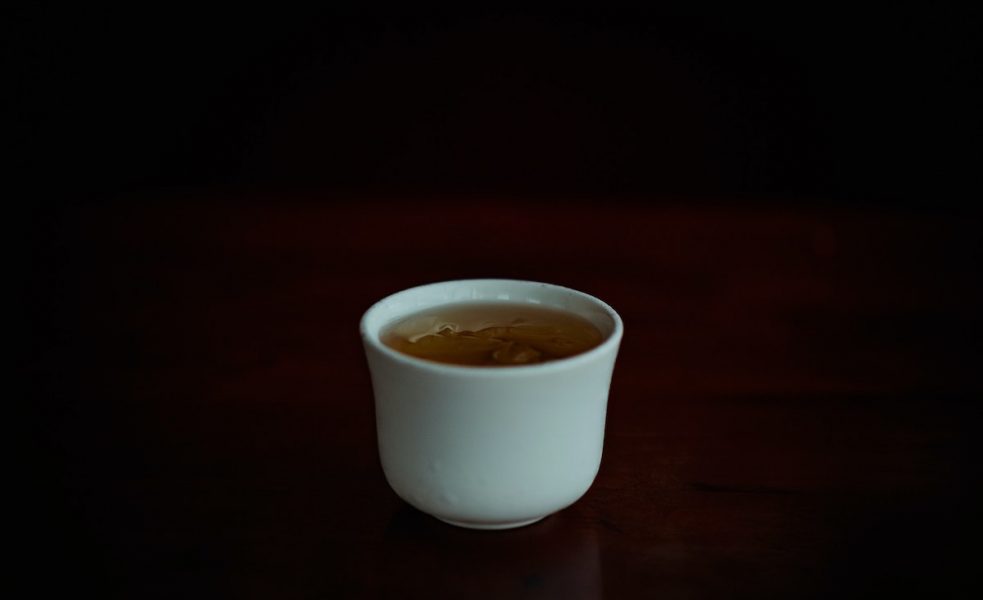There are so many kinds of tea that there are entire shelves dedicated just for them in supermarkets. But not every tea is the same. Just like how there’s a stark difference between wine bought from a chateau and wine bought from a corner store, there are some types of teas which are considered superior. Darjeeling tea is one such beverage.
The best Darjeeling tea is like the champagne of brewed teas. Today, learn what exactly is Darjeeling tea, where it comes from and its different variations. By the end, you may want to put down your pink lemonade and brew a nice perfect cup of Darjeeling instead.
What is Darjeeling Tea?

Tea is an excellent source of vitamins and nutrients, whether you’re in a vegetarian diet or simply eating what you want. And one of the best types comes from India. Darjeeling tea is a type of type harvested from the leaves of Camellia sinensis, also known as the tea plant.
There are many different varieties of tea plants, but the variety used to make the best Darjeeling tea is of the Chinese variety. Specifically, these plants grow in the lower Himalayas, in North Eastern. This area is known as Darjeeling, and its from this place that the tea gets its name. There are multiple types of Darjeeling tea available for sale and each one is the result of a different process.
Where Does Darjeeling Tea Come From?

Darjeeling is a municipality in West Bengal. Its located on the slopes of the Lesser Himalayas, at an elevation of more than 6,700 feet above sea level. From the city, visitors and residents are treated to amazing panoramic views of the third highest mountain in the world, Kangchenjunga. Its on the slopes of the city that the famous tea gardens and plantations flourish, providing the source of the best Darjeeling tea in the world.
Darjeeling first began commercially producing tea in 1856, under the oppressive reign of the British Empire. The United Kingdom had developed a ravenous hunger for all sorts of tea, and the drink would become the signature beverage of the largest European empire at the time. In that year, four tea gardens opened in Darjeeling, dedicated to growing and harvesting tea for exportation.
In less than 60 years, the demand for Darjeeling tea had exploded and by 1914 there were more than 155 tea gardens around the municipality. At its height, they produced more than 17 million pounds of Darjeeling tea a year.
Today, there are more than 80 tea gardens operating in Darjeeling, producing healthy tea for the world. These tea gardens are some of the most beautiful locales in India, nestled in lush valleys or clinging to the slopes of the mountains. If you have the chance to visit these tea gardens, you can enjoy the benefits of Darjeeling tea while looking over these inspiring views.
What are the Types of Darjeeling Tea?

If you’re a novice tea drinker, you may not be aware that there isn’t just one kind of Darjeeling tea. The tea gardens of India and lesser facilities around the world produce four main types of Darjeeling tea. The types of tea can be sorted out by the way they’re processed. What you may consider the best Darjeeling tea also depends on which season the tea leaves are harvested.
The main kinds of Darjeeling tea are as follows.
-
Darjeeling Black Tea
Black Darjeeling tea is the most common form of tea to come from the municipality’s tea gardens. These leaves are processed normally, meaning firth the leaves are dried by a machine, rolled to break them into pieces, fermented for flavor and sorted. However, black Darjeeling tea is fully dried up before being rolled, allowing it to oxidize completely. This gives the best Darjeeling tea a rich flavor that’s equal parts spicy, flowery and full of fruitiness. When brewed, the tea is a dark brown color reminiscent of rum.
-
Darjeeling Green Tea
Green Darjeeling tea requires a different process to retain its nutrients and other chemicals. The tea leaves are dried and maybe even steamed but they do not go through fermentation. This type is considered to be the best Darjeeling tea if you want to start a healthy diet or as a supplement when you’re a beginner vegetarian. When brewed, this type of tea is a light green color.
-
Darjeeling Oolong Tea
Oolong-type of Darjeeling tea come from a different type of tea plant. This species only thrives in the higher altitudes and cool environs, meaning only gardens at the tops of slopes and peaks can grow them. Darjeeling oolong falls between black and green tea. Its still withered and steamed but not fully oxidized, giving it a distinct orange color.
-
Darjeeling White Tea
Perhaps the most delicate type of Darjeeling tea, white Darjeeling is the most expensive tea to come out of the municipality. The entire process is done by hand, with workers picking it from the plants without machines and drying it out on the sun rather than a machine. It is then hand rolled before packaging. This means that the tea retains all its natural chemicals and is completely organic and sustainable. The tea when brewed is a delicate golden color, almost like champagne.
What are the Benefits of Darjeeling Tea?
What makes the best Darjeeling tea so healthy? According to research, the reason for its benefits lie in the chemical compounds within the plants. These chemicals are called polyphenols, and they’re amazing antioxidants.
Here are some of the benefits of Darjeeling tea.
-
Reduce Blood Sugar
Black Darjeeling tea can help lower your blood’s sugar levels if you drink it regularly. It achieves this by helping your body metabolize and process insulin more effectively than normal. If your body inefficiently processes insulin, you may develop type 2 diabetes. Alongside proper medication, healthy tea like Darjeeling can help you avoid diabetes or manage it better.
-
Improve Digestion
Stomach bacteria is essential in improving your digestion. Healthy stomach bacteria help break down food faster, letting you have a regular digestive schedule. Some research indicates that the polyphenols found in Darjeeling tea helps cultivate good stomach bacteria, enhancing your metabolism and letting you process food in more efficient way.
-
Boost Cardiac Health
Aside from polyphenols, healthy tea also contains high amounts of phytonutrients. These chemicals are the natural chemicals found in plants, but in Darjeeling tea, its very pigment gives it additional health benefits. Research shows that the pigment in Darjeeling tea helps manage your cholesterol levels, which can reduce your risk for developing a stroke or a heart attack.
-
Stop Cavities
Just like how Darjeeling tea can encourage the growth of healthy bacteria in your stomach, so can it reduce the population of bad bacteria in your mouth. Bacterial growth in your mouth is one of lead contributors to developing cavities. By curbing the population of bad mouth bacteria, Darjeeling helps keep your teeth healthy and strong.
-
Anticarcinogenic Properties
There are many types of polyphenols you can consume in the best Darjeeling tea, but the two most important are powerful antioxidants. Theaflavin and thearubigin are extremely efficient in blocking free radicals from interfering with your body. Free radicals are the substances that can cause your DNA to mutate and lead to cancerous growths. Each cup of Darjeeling tea prevents these harmful substances form damaging your body and keep you healthy.
How to Prepare Darjeeling Tea

There are a few ways to prepare Darjeeling tea, but you shouldn’t treat these delicate and flavorful leaves the same way you treat tea bags from the supermarket. Preparing the best Darjeeling tea requires patience, but the pay off is a delicious and aromatic beverage.
To prepare Darjeeling tea, all you’ll need is the right kind of water. If you want the best Darjeeling tea experience, you should only ever use spring water, which is loaded with minerals. Filtered tap water is also acceptable. In any case, you want the water to be nicely chilled. This will allow the tea leaves to infuse wonderfully.
Although you could use a tea infuser, some experts believe it crowds the tea leaves. Darjeeling tea is best brewed loose, to allow the leaves to steep evenly.
- Rinse both your tea pot and cups with hot water to warm them up a bit.
- Pour as many cups of spring or tap water you need into the kettle and bring to a boil.
- Let the boiled water sit until it cools do approximately 205 degrees Fahrenheit.
- In the tea pot, put two teaspoons of loose Darjeeling tea for every cup of water.
- Let steep between 3 and 5 minutes before drinking.
Darjeeling tea isn’t like other teas that you can just add splashes of milk or sugar to change the flavor. Just like you won’t soil a perfect glass of champagne with an ice cube, you should never mar the best Darjeeling tea.
The nest time you want to spice up your breakfast or establish a new afternoon tradition, why not buy a canister of Darjeeling tea? The benefits of Darjeeling tea make it the ideal beverage when you want to make a positive change in your life.



